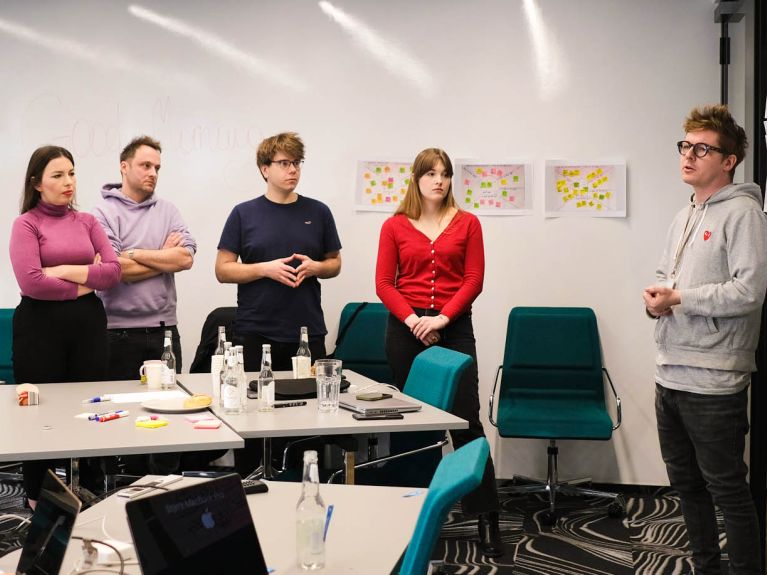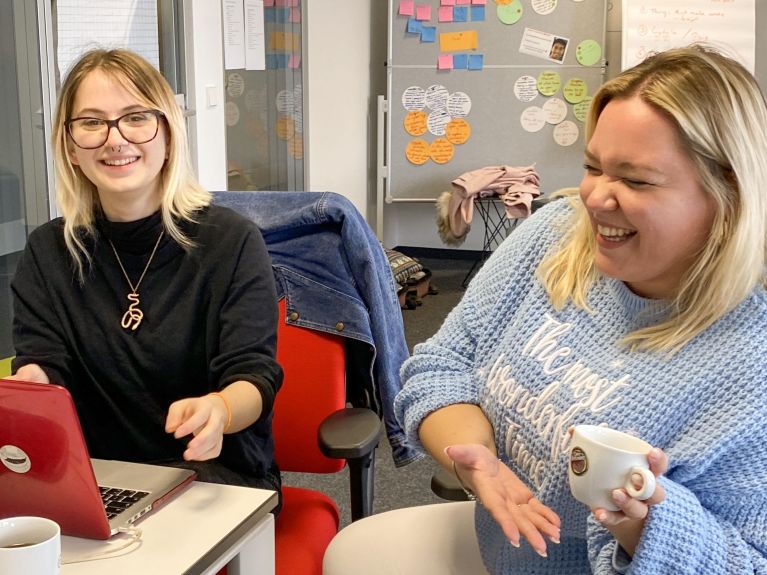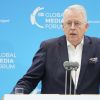Bringing people together through European media
Ten languages already and more to come: Deutsche Welle is heading up a multilingual content collective. ENTR’s vision is a pan-European media network.

What do Majorcans think of party tourism on their island? What is life like in Nicosia on Cyprus, Europe’s last divided capital city? What do the inhabitants of Greenland make of belonging to Denmark? These are just some of the questions to which ENTR’s 24 social media channels find answers. ENTR is a European content creator network which produces journalistic content which includes perspectives that transcend national borders.

Deutsche Welle is the consortium leader and manages the project with France Médias Monde, along with media partners from across Europe. “It’s not like we have a phone call once a month, agree on a topic and make a video which then gets adapted into all the languages,” says Patrick Leusch, project manager at ENTR. “Our day-to-day work really does involve pan-European collaboration with all our partners.”The partners work together to discuss thought-provoking topics and develop new formats.
New content is produced every day. “The algorithm punishes you if you get lazy,” Leusch observes. He’s speaking to us from the car on the way to Brussels. The call cuts out briefly when he crosses the border but quickly connects again. So far the project has posted between 10,000 and 12,000 times, including pictures, videos, infographics and much more. They produce content in nine languages: German, English, French, Portuguese, Romanian, Polish, Bulgarian, Dutch and Slovak.
Reaching young Europeans
The plan for a European media network arose in response to Brexit, when the UK left the EU in 2021. Patrick Leusch and his colleagues at Deutsche Welle asked themselves what role foreign media could play in the future of Europe. Their idea was to find better ways of reaching young Europeans. “There are stories about why Europe is important, but they don’t fire with young people anymore. For someone born 50 years after the end of the War, the story that Europe has achieved peace might make sense in theory but it isn’t what they experience in their lives.”
First they took a close look at the market and then developed their concept. They wanted to offer a service for young Europeans, but to share content created by young Europeans. But that hasn’t always been easy, as Leusch explains: “In May we had problems with not being able to produce some things as planned because our TikToker was sitting their school leaving exams. So we had to rejig our plans. But it really is important that you get people to do the work who can talk to your target audience.”The ENTR team combines permanent employees, freelance journalists and content creators from participating countries. Funding for the project comes from the Federal Foreign Office, national media partners and the European Commission.

Creating inclusive media content for everyone
ENTR doesn’t just aim to achieve the highest standards of journalism. Inclusion is also a priority. In this way, it may differ from some multinational services. “We’re not here to make a song and dance about great European achievements. We’re offering space for debate about what Europe can actually be,” Lausch says.He also stresses that means talking to people who feel ignored by existing media. “You have to conduct a serious discussion. It has to be in people’s own language, and you need to talk to those people who didn’t go on a school exchange trip to France and then spend two semesters abroad on the Erasmus programme,” he adds. The ENTR vision is therefore to create a pan-European media network which extends into the full breadth of society. Why does that matter so much?
According to Germany’s Research Institute for Social Cohesion, communication media and the way in which people relate to one another are key factors in constructing social cohesion. People who consume similar content on social media share a knowledge basis and find it easier to discuss ideas and values. And this is where ENTR comes in by contributing to a European media landscape. With over 140.000 followers and 160 million hits, the collective is going in the right direction but it is still a long way from its goal.
The plan for next year is to add Hungarian to the network – a whole new country and language. And ENTR want to reach even more young people. This is particularly relevant with European elections coming up in 2024, as 16 and 17-year-olds in Austria, Belgium, Germany, Greece and Malta are able to vote for the first time. Young people, who first need to be reached – such as through ENTR.

